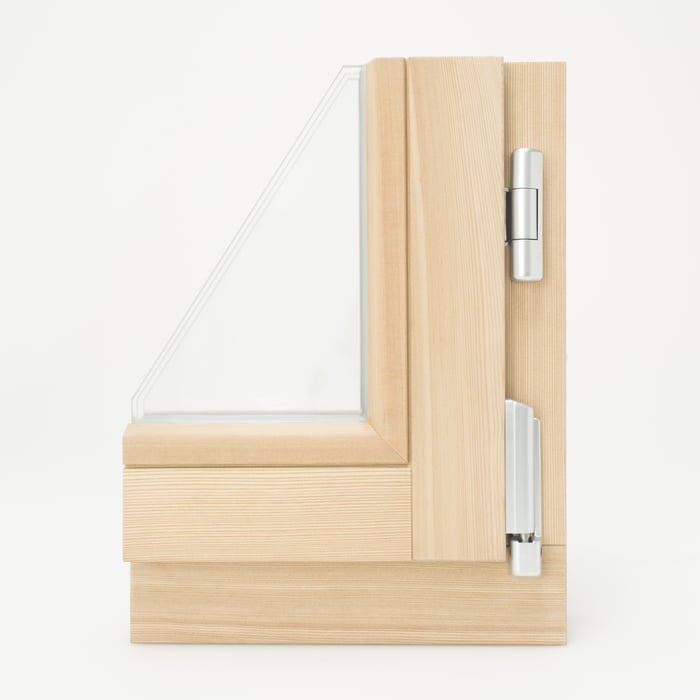When talking about windows, we should speak of performance, build quality, sound control, cost, and aesthetics. We are in the era of high-performance and sustainable building practices, and the window is one of the most complicated and critical components of your building; they are the component that completes your building enclosure and allows light and air to come into your interior space. Windows can control air flow, solar radiation, thermal conductance, facade aesthetic, and even impact the surrounding micro-climate of the site.
Windows have evolved significantly since the first glass panel appeared during the Roman Empire in 100 AD; and it continues to improve with new coatings, treatments, glass composition, and hardware. But no component is more critical to the life span and proper operation of the window than the window frame.
The frame brings the window together, not only does it allow for the glass to be set and sealed correctly, it also contains the mechanical components that operate and press the gaskets that air seals them, and it’s the surface that allows for securing to the building structure.
The materiality of the frame is expected to be of the highest quality to achieve all the benefits mentioned above, and several materials can help you get good value and performance for your windows: Wood, Aluminum, and uPVC. However, here at Eco Supply, it is essential to understand that each of these materials has an environmental impact when being manufactured, durability, and a useful life expectancy that can add unexpected costs to your building, and even impact the integrity of your structure.
 Pictured: IV79 Historic Window Profile - Bildau & Bussmann
Pictured: IV79 Historic Window Profile - Bildau & Bussmann
Wood
Wood is a carbon neutral, natural material readily available in nature, that falls under the category of renewable materials thanks to sustainable practices set by agencies like the Forest Stewardship Council (FSC), that dictates that for every tree logged, two more need to be planted.
- Durability is high on finished wood frames; the coatings help them cover from UV radiation with minor discoloration and prevent warping and breaks due to temperature swings.
- Service life for wood windows is expected to be 40 years under standard use and occasional maintenance such as cleaning of exterior frame and light retouches.
- Thermal conductivity is the lowest among the three materials, making it the top choice for thermal bridge free construction.
uPVC
Unplasticized Polyvinyl Chloride is the result of a combination of synthetic elements (chlorine, carbon, and hydrogen) some of these are the product of the chemical harvesting of fossil fuels. Unlike PVC, uPVC is not harmful to humans after manufacturing because it does not contain Phthalates or BPA's; however, the manufacturing process is a considerable burden to the environment since it produces hydrocarbons, dioxins, vinyl chloride, heavy metals, and other carcinogens and toxic waste.
- Durability is moderate; UV ray exposure can make the material become brittle and break; this has also been found true for severe changes in temperature.
- Service life for uPVC windows is expected to be 25 years under standard use and repair of damaged units is not possible, full replacement is needed.
- Thermal conductivity is excellent thanks to the low conductivity of the polymers; however, uPVC windows rely on a metal frame inside for rigidity, and this can cause the thermal conductance to rise.
Aluminum
Aluminum is harvested from bauxite ore, a non-renewable resource. To turn the ore into aluminum a significant amount of energy is required, and like uPVC, harmful pollutants are expelled to the atmosphere and the ecosystem; these pollutants include: Carbon Dioxide, acidic Sulphur dioxide, hydrocarbons, etc.
- Durability is high, the highest of all three materials. UV ray exposure does not affect the material; and this also true for temperature swings. However, un-coated aluminum frames can corrode if not appropriately treated (anodization, or other coating treatments)
- Service life for aluminum windows is expected to be 43 years under standard use. The highest among the three materials and repair of damaged units is possible, but full replacement is advised.
- Thermal conductivity is poor, the highest of the three materials; however, the implementation of thermal breaks can decrease its thermal conductivity and reduce thermal bridges.
As a sustainable and high-performance building materials distributor, Eco Supply can help you find the best solution for your project if you would like to get more information please contact us, and we will be happy to guide you.